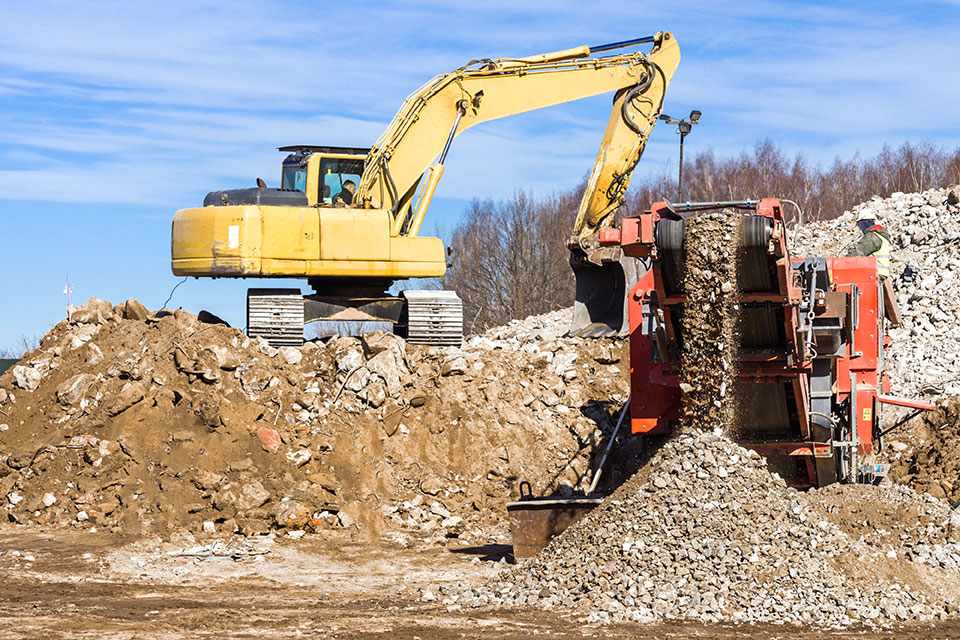
The Difference Between Grading And Excavation
Site management plays a pivotal role in construction projects, and two essential activities in this realm are grading and excavation. While closely related, grading and excavation serve distinct purposes in preparing a construction site for optimal functionality and safety. In this post, we will explore the key differences between grading and excavation, highlighting their individual significance and how they contribute to effective site management.
Grading
Grading refers to the process of shaping and leveling the ground surface to achieve desired slopes, elevations, and contours. It involves manipulating the soil and terrain to ensure proper drainage, prevent erosion, and create a stable foundation for structures. The primary objectives of grading include:
Surface Preparation: Grading involves removing or redistributing soil and debris to create a level surface for construction activities. This eliminates irregularities and ensures a uniform foundation for buildings, roads, and utilities.
Drainage Management: Proper grading facilitates efficient water drainage by establishing slopes and contours that direct water away from structures and toward designated drainage systems. This helps prevent water accumulation, potential flooding, and structural damage.
Soil Stability: Grading helps address soil stability issues, such as excessive slopes, by redistributing soil to achieve a more balanced and structurally sound terrain. It reduces the risk of landslides, erosion, and soil settlement, ensuring the stability of the construction site.
Site Aesthetics: Grading also contributes to the visual appeal of a site by creating attractive landscapes, leveling areas for recreational spaces, and optimizing the use of available land.
Excavation
Excavation, on the other hand, involves the removal of soil, rocks, and other materials from a construction site. It serves multiple purposes in site management, including:
Foundation Preparation: Excavation is crucial for creating a suitable foundation for buildings and structures. It involves digging trenches or excavating areas to the required depth, allowing for the installation of footings, basements, or utility lines.
Utility Installation: Excavation provides access for installing underground utilities, including water pipes, sewer lines, electrical conduits, and communication cables. It enables the proper placement and connection of these essential infrastructure components.
Earthmoving: Excavation allows for the relocation of soil and materials within the site or their removal from the site entirely. This process may involve cutting (removing material) or filling (adding material) to achieve the desired elevation and contours.
Site Preparation: Excavation clears the construction site from any obstacles, such as trees, rocks, or existing structures, that need to be removed or relocated before construction can commence.
Hazard Mitigation: Excavation also plays a role in identifying and removing any potential hazards on the site, such as underground storage tanks or contaminated soil, ensuring a safe and compliant work environment.
Differences
While grading and excavation are distinct processes, they often go hand in hand during site management. The key differences between the two can be summarized as follows:
Objective: Grading focuses on shaping and leveling the ground surface, while excavation involves the removal of soil and materials from the site
Manipulation of Soil: Grading primarily involves redistributing soil to achieve desired contours and stability, whereas excavation involves the physical removal or relocation of soil and materials.
Depth and Precision: Grading typically involves shallow adjustments to achieve desired slopes and elevations, whereas excavation often requires deeper and more precise digging to accommodate foundations and utility installations.
Equipment and Techniques: Grading can be accomplished with heavy machinery like bulldozers and graders, whereas excavation may involve the use of excavators, backhoes, or trenchers to remove soil and materials.
Grading and excavation are vital components of effective site management in construction projects. While grading focuses on shaping the ground surface for proper drainage, stability, and aesthetics, excavation involves the removal of soil and materials to prepare the site for construction and utility installations. Understanding the differences between grading and excavation is essential for efficient site management, enabling construction professionals to plan and execute projects with precision, safety, and optimal functionality. By prioritizing site management practices, including grading and excavation, construction teams can lay the foundation for successful and smooth project execution.

